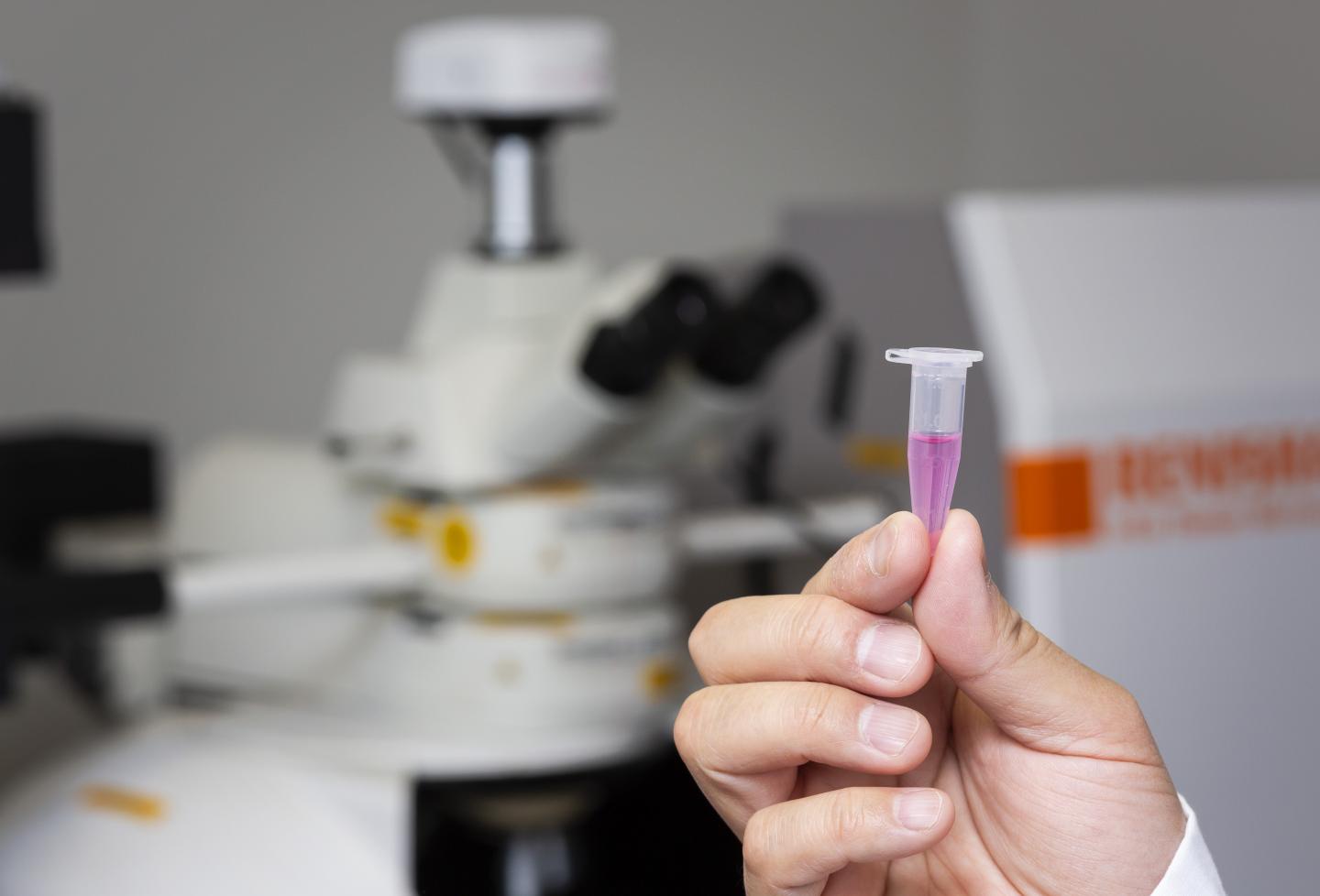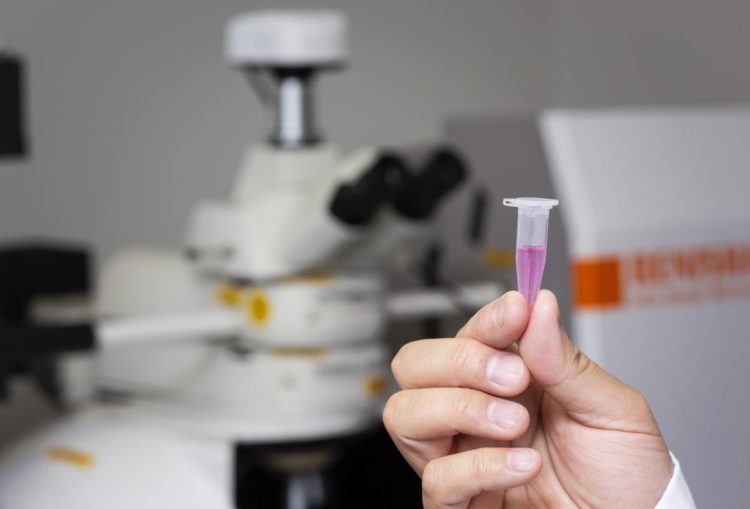Utah State University researchers develop probes to help improve techniques to test drugs for obesity-related conditions

Credit: USU
A collaborative team of researchers at Utah State University and the University of Central Florida developed a tool to track cellular events that may lead to obesity-related conditions in people.
The research findings were published Feb. 3 in the Proceedings of the National Academy of Sciences.
The team, led by Anhong Zhou, a professor in USU’s Department of Biological Engineering, developed a sensing optical imaging nanoprobe that uses scattered light to provide a structural fingerprint for molecules. The probes can be used to more easily identify and illustrate cell surface receptors that can either prompt or stop cellular responses to certain external stimuli. The probes make it possible to monitor multiple surface receptors on an individual cell and provide researchers an unprecedented view of cellular surface activity. Zhou and his team, including the biological engineering PhD student Wei Zhang, applied these novel nanoprobes to successfully detect the cell receptors that recognize fatty acids at the single living cell level.
The technique represents a major step in developing improved understanding of certain cellular events and could have widespread impact on the study of fat intake and the development of obesity. The new method could also be used as a simple screening technique for testing external stimuli that trigger the surface cell receptors and lead to the linking of fatty acids. This would make for an efficient test to ensure that new drugs accurately prompt the correct cellular activities that lead to obesity and other obesity-related conditions. Zhou and his team’s work is increasingly relevant as the prevalence of obesity impacts public health in the United States.
Zhou says the research represents an exciting collaboration between researchers and aligns well with his belief that biological engineering is an important frontier in the scientific community. “This is an excellent example that fulfills our long-term goal of applying engineering tools to solve biology-driven problems,” he said. “In the past several years, we have been thrilled to develop new cell-based assay technologies that potentially benefit human health problems like obesity. We are currently extending this technology for developing a new method for early cancer diagnosis.”
###
This work was primarily supported by the National Science Foundation.
Media Contact
Anhong Zhou
[email protected]
435-797-2863
Original Source
https:/
Related Journal Article
http://dx.





